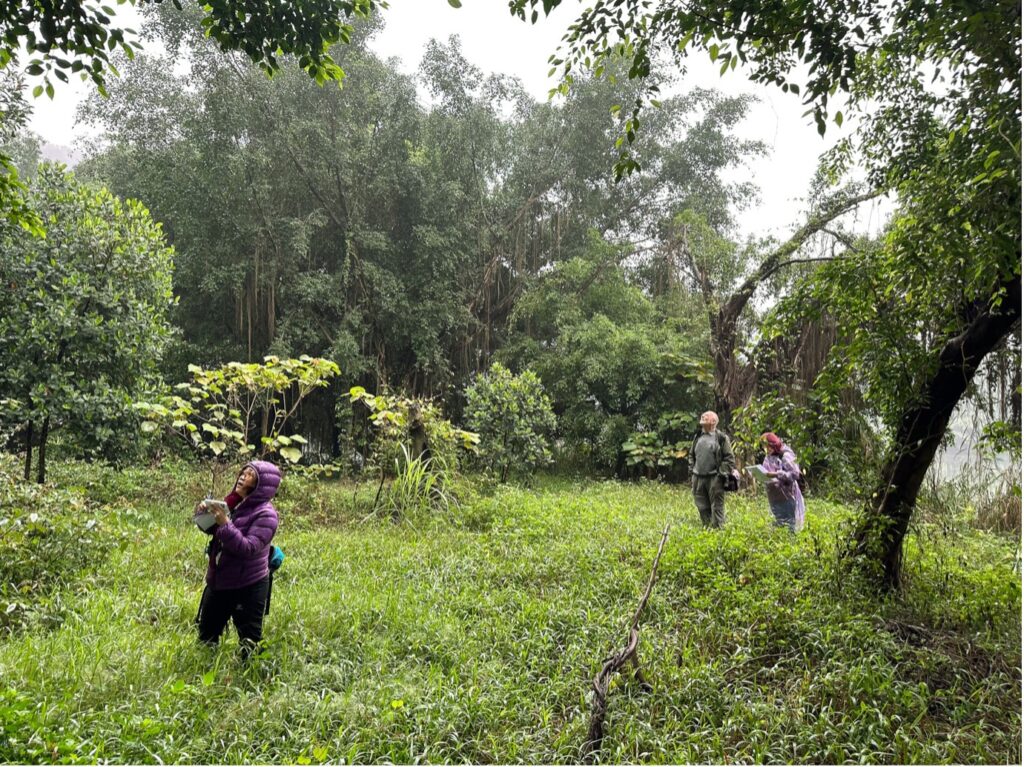

If you’ve been to Stone Zoo, you’re probably familiar with our northern white-cheeked gibbon troop, comprised of Mom Iggy, Dad Kien, and offspring Jian and Trieu. Although they look very similar to monkeys, gibbons are, in fact, apes, just like gorillas, chimpanzees, and orangutans! They are unique in traveling almost entirely through the trees by swinging only with their arms, a method called brachiation, but as they are hidden away in Southeast Asia’s tropical forests, few people get to see them pass by, sometimes swinging past at over 30 miles an hour! They are enormously vocal, with couples performing complex duets. Not only do different gibbon species have different songs and calls, but distinct populations of same species can have their own dialects, similar to how different human populations have regional accents and dialects.
Unfortunately, just like other apes, gibbons face many challenges in the wild. All but one of the 20 gibbon species in the world are either Endangered or Critically Endangered (and the one that isn’t is one step away from Endangered, at Vulnerable). Rampant habitat loss from development, timber harvesting, and conversion to palm oil plantations has decimated the complex, tall tropical forests that gibbons need to survive. One of the biggest threats to wild gibbon populations is the illegal pet trade, and there is an easy way for you to be a part of that solution by not posting, sharing, or liking photos or videos of gibbons, or any primates, being held, pet, fed, or in an inappropriate setting like a home or backyard. Social media has a huge effect on the illegal wildlife trade, and not spreading that content can make a huge difference!
The northern white-cheeked gibbon has the dubious distinction of being one of the Critically Endangered gibbons. Once found in China, Laos and Vietnam, it is now considered extinct in China, rare in Laos, and barely holding on in Vietnam in only a few small and scattered protected areas.
This year, as part of our commitment to our role as a wildlife conservation leader in New England and around the world, we have begun supporting an organization based in Vietnam called Three Monkeys Wildlife Conservancy. This organization is committed to reintroducing the northern white-cheeked gibbon to a now well-protected forest reserve where the species had previously gone extinct. The main objective of the project is to initiate the reintroduction of the critically endangered Northern white-cheeked gibbon in the Trang An UNESCO World Heritage Complex, with the long-term vision of establishing a viable and eventually self-sustaining population within a secure habitat.


While the focus of the initiative is on reintroducing the gibbons to the World Heritage Site, the site itself is home to a wide range of wildlife. This includes clouded leopard, Asiatic black bear, and the similarly Critically Endangered Delacour’s langur, which the Three Monkeys Wildlife Conservancy previously reintroduced to this site after it, too, went locally extinct. As a World Heritage Site, the reserve now has special international attention that will greatly enhance the protection of this wild landscape. This project will strengthen the global focus on conservation of this important site for a range of species.

We are very excited to be a part of this reintroduction effort that will help to recover this Critically Endangered species of great ape. With Zoo New England’s help and your support, the call of the northern white-cheeked gibbon can soon be heard again in the forests of Vietnam. And don’t forget to visit our troop here at Stone Zoo! Since gibbons are a tropical species, the are only on exhibit if it is above 40 degrees, so be sure to listen for their morning calls during the warmer days.
